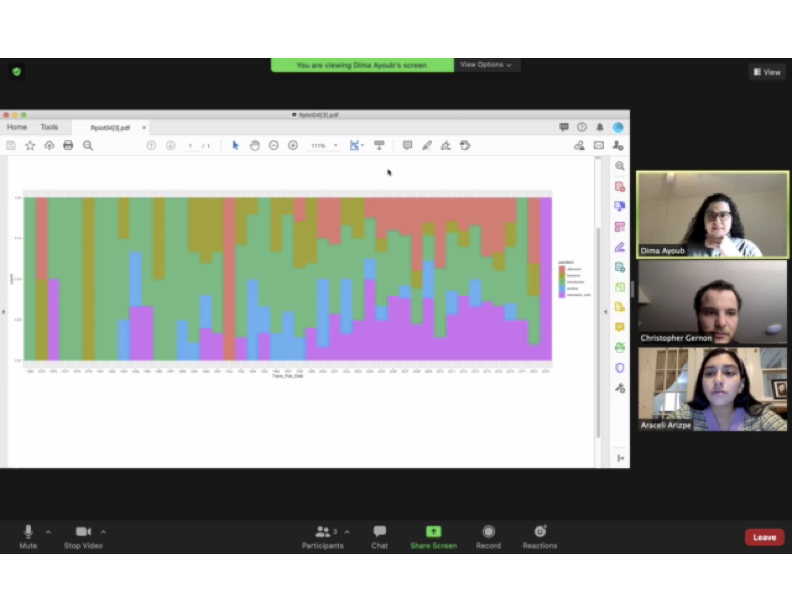Paratexts and Digitization: An Interview with Dr. Dima Ayoub

What is the name of your project?
I am working on two concurrent projects that inform one another – a book monograph: Paratext and Power: Modern Arabic Literature in Translation and a digital project: Digitizing Arabic Literary Paratexts in Translation. I have been collecting data for the Digitizing Arabic Literary Paratexts in Translation project for about a decade.
What is the question that your project engages?
Why has the inclusion of paratexts such as introductions, prefaces, forewords, afterwords, translator’s notes, glossaries, and footnotes persisted in translations of Arabic literature since WWII?
How does this project fit into the broader area of inquiry that you are interested in?
One of the project’s objectives is to demonstrate how the westward movement of Arabic literature can be mapped as much through the realm of paratextuality as through the body of the text itself. I examine the ways that a dense network of translators, editors and publishers use paratexts as codifying tools with multivalent functions in translations of Arabic literature. I work at the intersections of Arabic and postcolonial literature, translation studies, gender studies, and digital humanities. My project employs a hybrid mode of analysis that combines close reading with digital tools looking closely at the impact of paratexts on Western cultural understandings of Arabs and Muslims in the postcolonial and post-WWII imaginary. I am particularly interested in grounding the relationship between paratexts and knowledge production about Arabic literary canonicity, gender relations, and the politics of translation. Using computational methods, I scale, track, and tease out where imperialist state power, demands and expectations lurk within the margins of Arabic literary translation.
What sort of methods and technologies are you using to do this project?
I am interested in questions of gender, location, networks, word patterns, styles, genre and period. Because I am working with a large dataset, this requires a hybrid of quantitative and textual analysis combining close reading and distant reading. Traditional methods of close reading are limited/limiting so I rely on methods of measurement, classification, and filtering in order to better excavate and analyze the material. In addition to Google Sheets which is the main software we use to enter, organize, manipulate, and visualize the data, we’ve used OpenRefine, RStudio, Mapbox, Python, HTML, CSS, Javascript, Visual Code, Adobe Illustrator, Wordpress, Elementor
Who are you working with on this?
Currently, I am working with Christopher Gernon ’21 and Araceli Arizpe ’21, but I have worked with a number of students on this project who have graduated namely, Mari Odoy ‘20, Priyanjali Sinha ‘18, Will O’Neal ‘20, Isabella Maureci ’20.5. The staff at the library and colleagues at DLA have been an invaluable resource. From the library staff, Ryan Clement has guided me through data visualization possibilities and I have consulted with him from the get-go. Patrick Wallace was involved in the early stage of digitization, he’s an expert on classification systems, so he had instructive input on how to organize the data.
What have you learned so far?
I have learned how spectacularly smart, insightful, and reliable Middlebury students truly are. They have risen to the occasion more times than I can count, showing me new programs and opening my eyes to new analytical approaches. Marrying digitization with close textual analysis can be quite challenging. As a literary scholar, what is most interesting to me are the elements of a text that refuse or resist standardization but my desire to maintain “messy” data is often in conflict with the principles of the digital realm that require standardization.
Where are you going next?
I am working on a searchable translation database that will focus primarily on paratexts in Arabic literature but will be useful for anyone interested in translation more generally.

